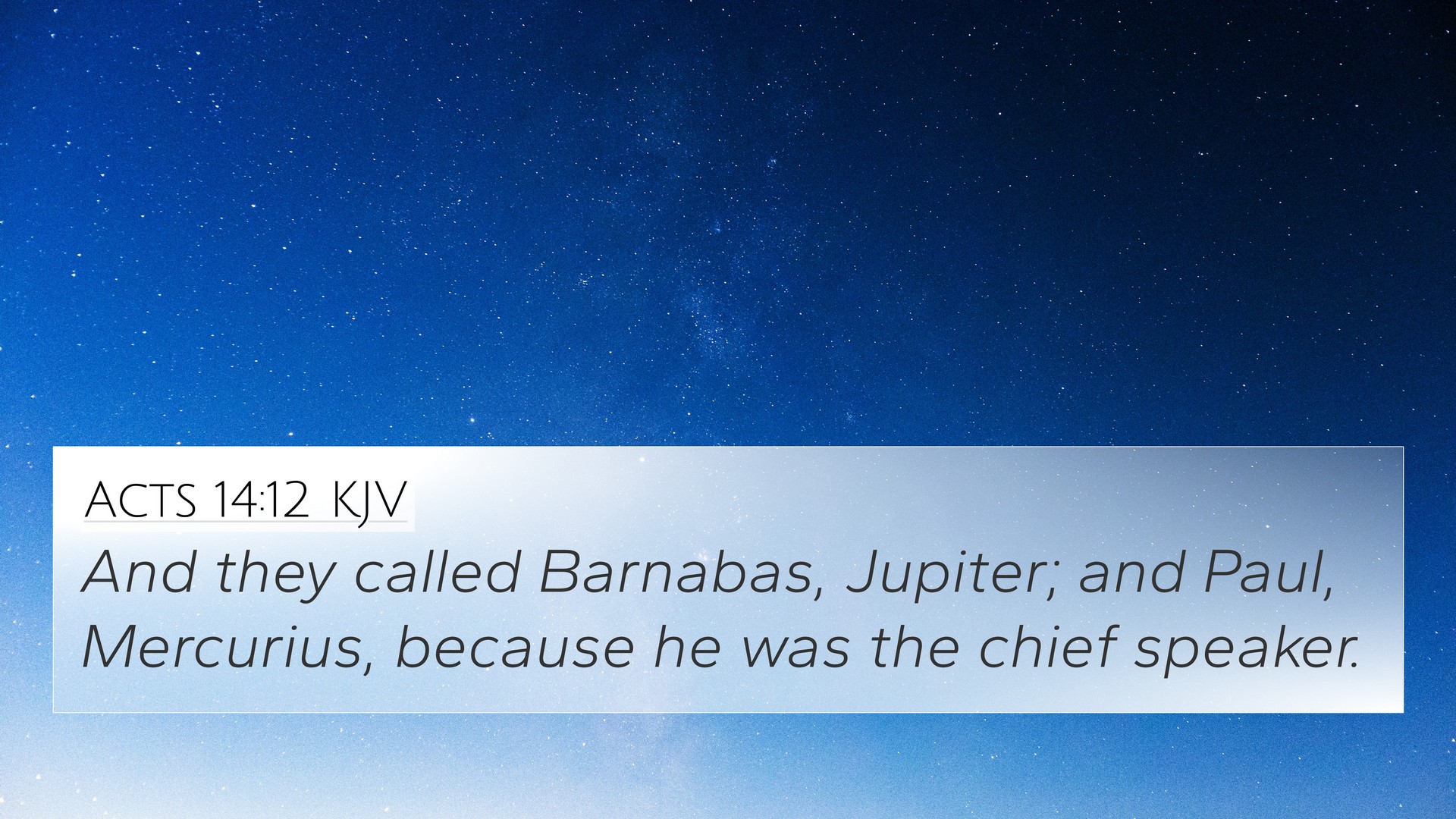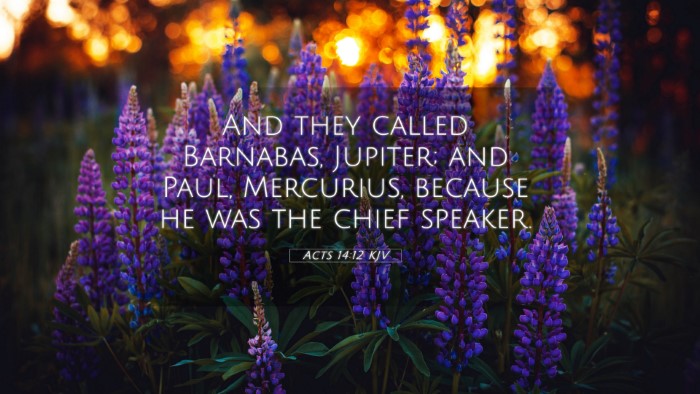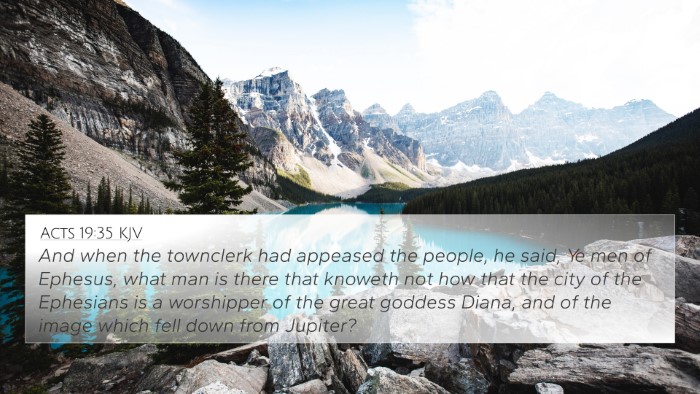Understanding Acts 14:12
Acts 14:12 states: "And they called Barnabas, Jupiter; and Paul, Mercurius, because he was the chief speaker." This verse arises from an event in Lystra where the Apostle Paul, after healing a lame man, is mistaken for a deity. To comprehend this verse, we will explore its meaning through various public domain commentaries and identify related scriptures.
Commentary Insights
Matthew Henry's Commentary
Henry emphasizes the misconception of the audience at Lystra who regarded Paul and Barnabas as gods due to the miraculous healing. He points out that their response exemplifies human nature's propensity to idolize and misinterpret divine workings. Indeed, they linked the works of God to the worship of pagan deities, showcasing a profound ignorance regarding the true nature of the divine.
Albert Barnes' Notes on the Bible
Barnes elucidates that calling Paul "Mercurius" (Hermes) and Barnabas "Jupiter" (Zeus) reflects the cultural context of the Lystrians, who were primarily influenced by Greek mythology. This reaction underscores the challenge early Christians faced in evangelizing among Gentile communities, where the gospel encountered pre-existing beliefs steeped in idolatry.
Adam Clarke's Commentary
Clarke adds that the local priest of Jupiter attempted to offer sacrifices to Paul and Barnabas, highlighting the dangers of misunderstanding divine authority. He stresses that the apostles pushed against these misconceptions, directing the crowd’s attention towards the true God, emphasizing the need for readers to distinguish between the creator and His creations.
Cross-Referencing Related Scriptures
To enrich our understanding of Acts 14:12, we can identify several relevant biblical cross-references:
- Acts 14:15-17: This passage captures the apostles' response to the crowd, clarifying the nature of their message and the purpose of their miracles.
- 1 Corinthians 10:20-21: Paul discusses the implications of idolatry, akin to the event in Lystra, highlighting the inherent danger of worshipping pagan deities.
- Romans 1:25: This verse speaks to the exchange of truth for lies—a theme prevalent in Paul's ministry among Gentiles, as illustrated in Lystra.
- Galatians 4:8-9: Paul reflects on his past interactions with Gentile idolatry, contrasting it with the knowledge of the true God.
- Hebrews 1:1-2: This passage discusses God's communication to humanity through prophets and ultimately through His Son, contrasting the divine authority with human misconceptions as seen in Lystra.
- Matthew 21:15: Similarly, this verse shows how people can misplace their reverence, needing correction when divine works are confused with human institutions.
- Acts 17:16-23: Paul’s sermon in Athens parallels the themes of addressing idol worship and redirecting worship toward the true God.
Thematic Connections in Acts 14:12
Acts 14:12 serves as a profound intersection between culture, idolatry, and the true essence of apostolic teaching. Each commentary contributes to understanding how the early church navigated the complex dynamics of Hebrew teachings against a backdrop of Hellenistic beliefs. Here’s how these connections enhance our comprehension of the biblical narrative:
- Cultural Misunderstanding: The reception of Paul and Barnabas in Lystra showcases the stark gap between the apostolic message and prevailing cultural beliefs.
- Idolatry versus True Worship: The response of the Lystrians illustrates the persistent challenge the apostles faced in redirecting worship due to entrenched pagan perspectives.
- Divine Authority: Clarke's emphasis on directing worship to God reinforces the biblical theme that true miracles serve to glorify God, not individuals.
- Communication of the Gospel: The necessity of careful explanation of the gospel message in culturally diverse contexts is strongly highlighted.
- The Role of Miracles: Miracles should point to God, as exemplified not only in this narrative but throughout the New Testament.
Conclusion
Acts 14:12 is a striking example of how the early church confronted the realities of a pagan world. Understanding this verse, the misconception of Paul and Barnabas as deities, requires careful cross-referencing and analysis of both Old and New Testament scriptures. The related verses enrich the narrative, offering insights into God’s direct communication and the inherent danger of idol worship—an issue that remains relevant in discussions about faith today.
Utilizing Cross-References for Deeper Insights
Leveraging tools for Bible cross-referencing allows for a comprehensive understanding of scriptural texts. Here are some key methods to enhance Bible study:
- Employ a Bible concordance to explore thematic connections between verses.
- Use a Bible cross-reference guide to efficiently find related scriptures.
- Engage in cross-referencing Bible study methods to deepen comprehension through thematic analysis.
- Incorporate Bible chain references for identifying overarching stories in scripture.
- Explore detailed cross-references between Gospels for a comparative study of narratives.



